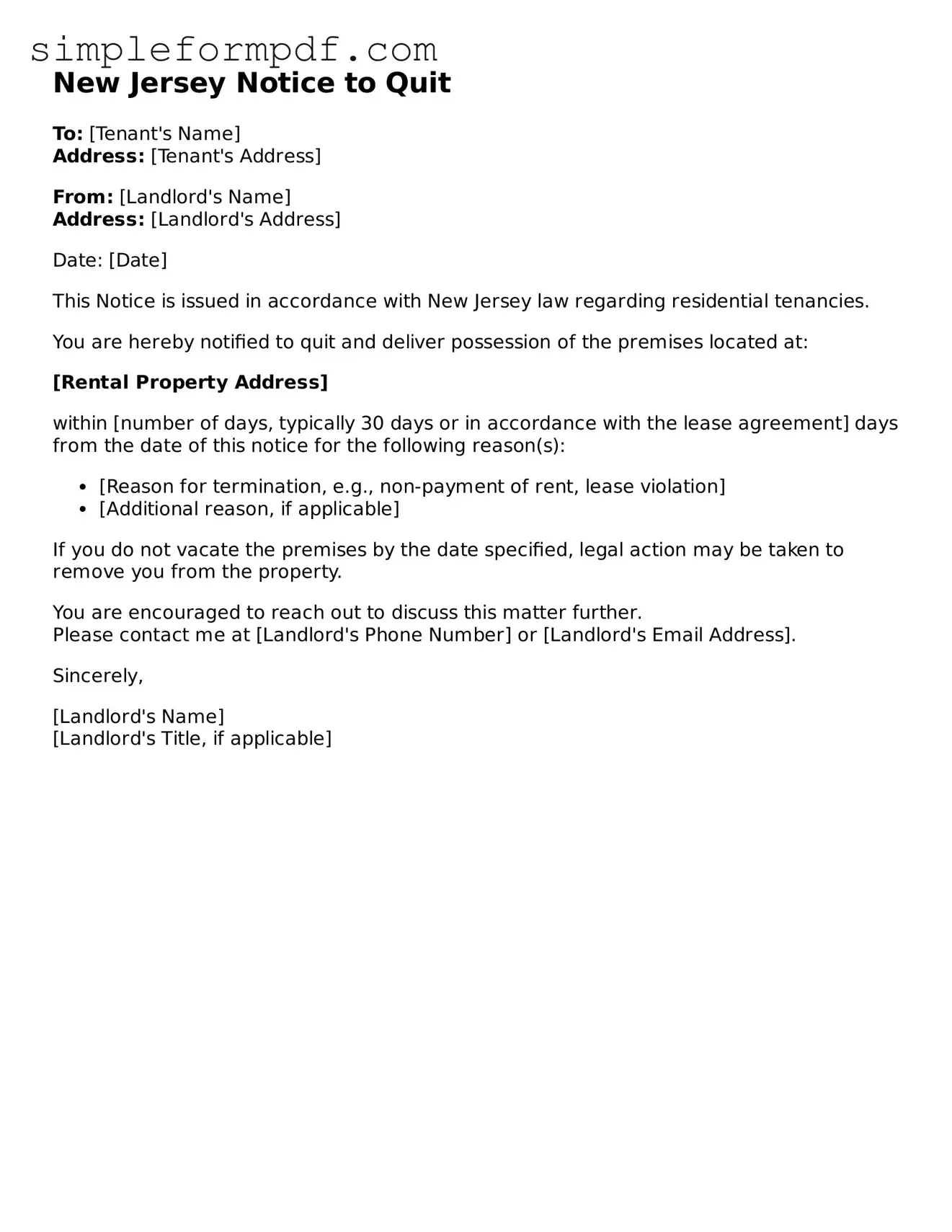Free Notice to Quit Form for the State of New Jersey
The New Jersey Notice to Quit form is a legal document that a landlord uses to inform a tenant that they must vacate the rental property. This notice typically outlines the reasons for eviction and provides a specific timeframe for the tenant to leave. Understanding how to properly fill out and serve this form is crucial for landlords looking to initiate the eviction process.
Ready to take the next step? Fill out the form by clicking the button below.
Launch Editor
